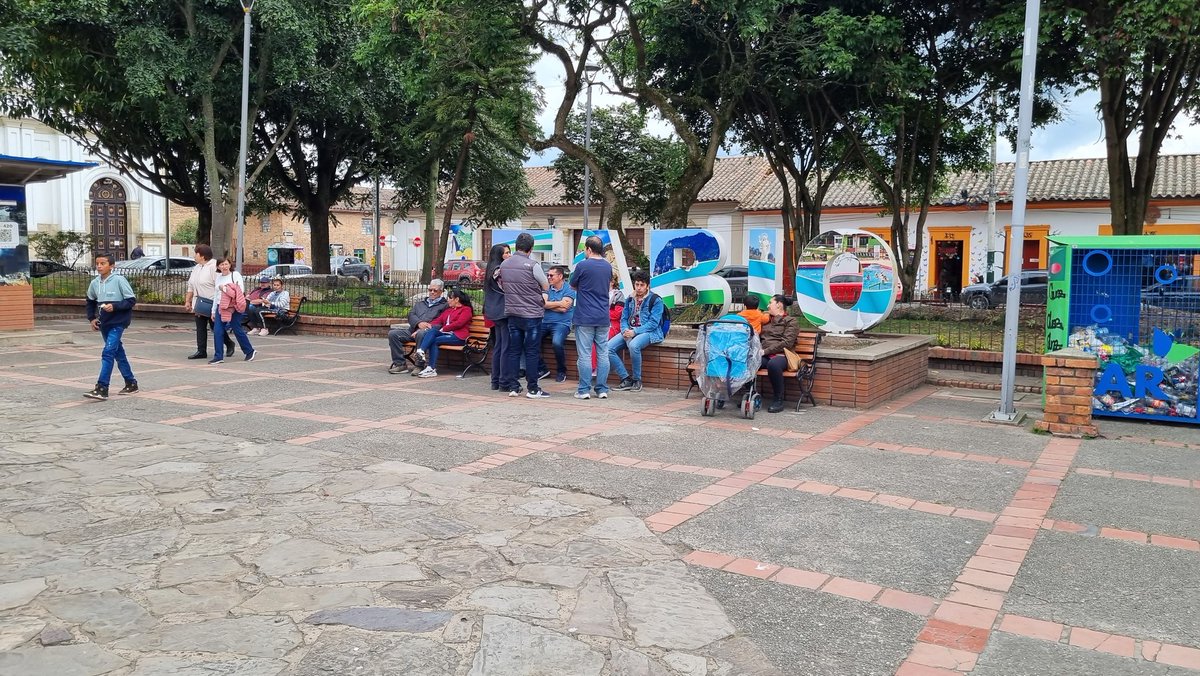About 10 years ago, I reached Colombia with 2 suit cases and with zero idea of I will survive here. Tabio was my first adventure outside Bogotá on my own. I realized that small towns here are no different to our own. Tabio therefore has a special place in my heart.
#Tabio
#Tabio

As a person with a passion for history and culture with no spanish skills, Tabio accepted me with open arms and thanks to all good souls, I have made friends that are now for life. I learnt and experienced the power of #CirculoDePalabras here. 

I learnt the concept of a Spanish historic center, #CentroHistorico and how it influences life in small towns even today, in #Tabio. The church, the town hall, banks, shops and restaurants, park with benches etc form an integral part of this historic center. 

Despite colonization, conversion by coercion, small towns such as Tabio, still fight to retain their indigenous identity, to not forget their history.
#IdentidadIndigena
#IdentidadIndigena

The most fascinating legend in Tabio is #PeñaDeJuaica or Juaica peak. This place was a solar observatory during the times of Muisca. Based on astronomical signs, lamps were lit here that was used to communicate with Bacatá cacique in Monserrate peak of Bogotá, for Sun festivals. 

Climbing this peak is a hard, challenging and spiritual experience. According to Muisca tradition, you first have to seek permission from the moutain to climb her. This is the Muisca way of thanking the #MadreTierra or Mother Earth.
#Juaica means the portal of Gods in Chibcha.
#Juaica means the portal of Gods in Chibcha.

Today Juaica is the place for UFO and alien theorists. People claim from time to time that they have found "objects" and "visions" a top the peak.
I once attemped to climb the peak, without praying for permission. I lost my way after 4 hours and had to return.
#Tabio
#Juaica
I once attemped to climb the peak, without praying for permission. I lost my way after 4 hours and had to return.
#Tabio
#Juaica

Sunday markets are common in Colombia just like back home. You can find everything from fruits and vegetables to artesanal hand made products. This is Tabio's Sunday market.
#MercadoDomingo
#MercadoDomingo

This dance form is called "Torbellino" a fusion between Spanish and indigenous music. #FeriasYFiestas (Fairs and Parties) season is in July-August, in Cundinamarca and Boyacá states. During this time, #Torbellino dance performances are very popular in Tabio. 

Perfectly maintained #cobblestone streets in Tabio 

Tabio comes from Chibcha language "Te Ib" meaning a water hole. It refers to the place where Río Frío (Cold River) flows into Río Bogotá (Bogotá river)
#Tabio
#Chibcha
#Tabio
#Chibcha
Here is a view of #ValleDeRíoFrío or Cold River Valley. The church that you see far away is Tabio's main church that I shared at the beginning of the thread.
#Tabio
#Tabio

There is a #MuseoFotográfico (Photography museum) in the main square, this was one of the firsts, in #Cundinamarca
This series of well preserved photos capture the history of #Tabio
Such open photography museums later spread to other towns in Cundinamarca including our #Ubaté
This series of well preserved photos capture the history of #Tabio
Such open photography museums later spread to other towns in Cundinamarca including our #Ubaté

The #StreetArt in Tabio has excellent depictions of the history of #Muisca
This is a typical Muisca town. Notice the #Cacique in coloured feathers. They were the rulers of the Muisca federation along with #Zaque
This is outside a Pizza joint. Imagine the love for history!
This is a typical Muisca town. Notice the #Cacique in coloured feathers. They were the rulers of the Muisca federation along with #Zaque
This is outside a Pizza joint. Imagine the love for history!

And, the restaurants and the quality of food, both regular and vegetarian, are of another level in Tabio and the #Gourmet restaurants are both excellent and economical. Remember Tabio is a small town which means almost everything can be sourced locally. 



My favourite gourmet restaurant, not only serves food, but also sells single origin coffee, ghee, and one of the only places in the region sourcing gingelly oil. Oh yes, the vegan versions of Tamal here are extremely good.
#Machay
#Tabio
#Machay
#Tabio

• • •
Missing some Tweet in this thread? You can try to
force a refresh

 Read on Twitter
Read on Twitter



